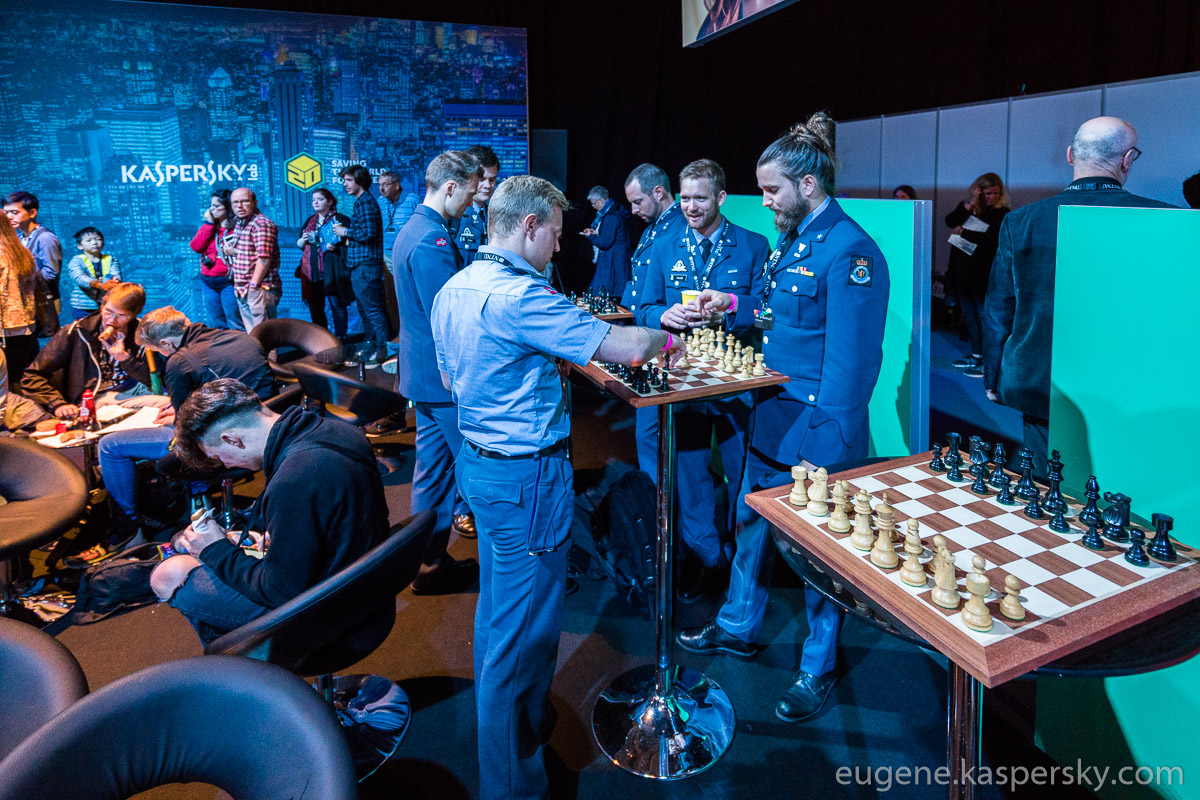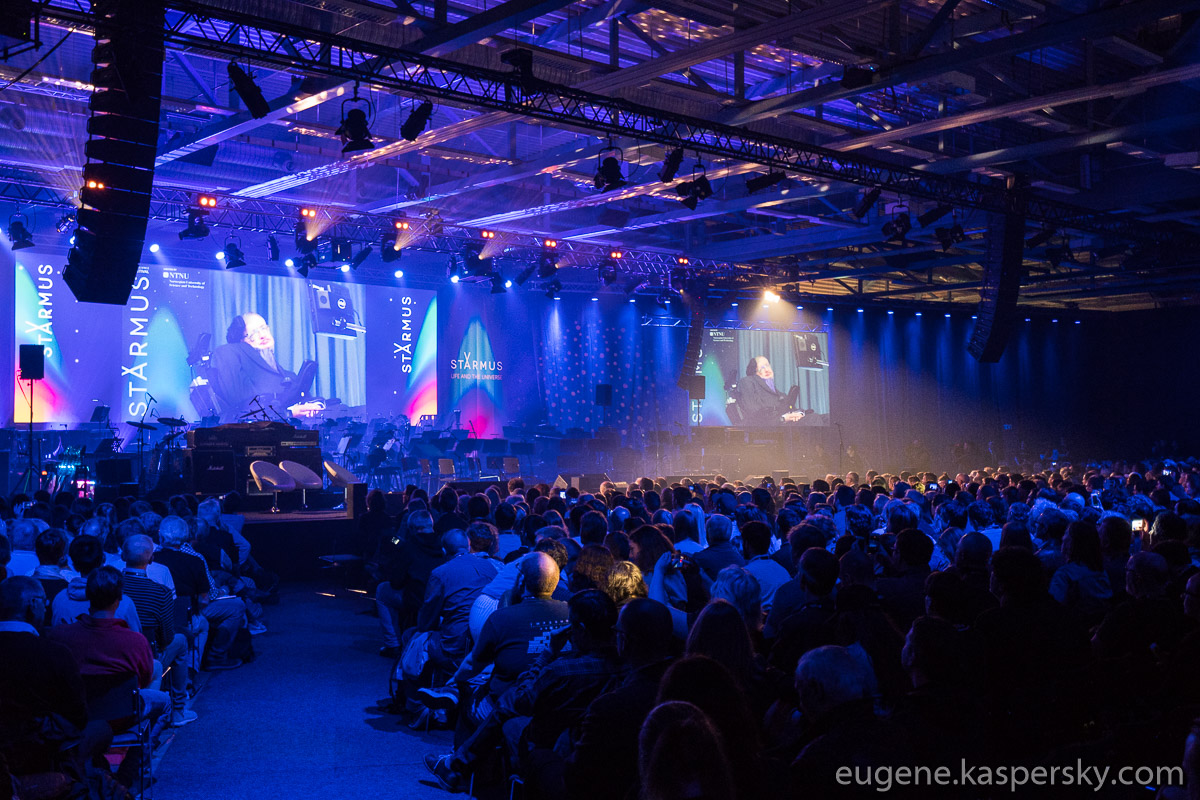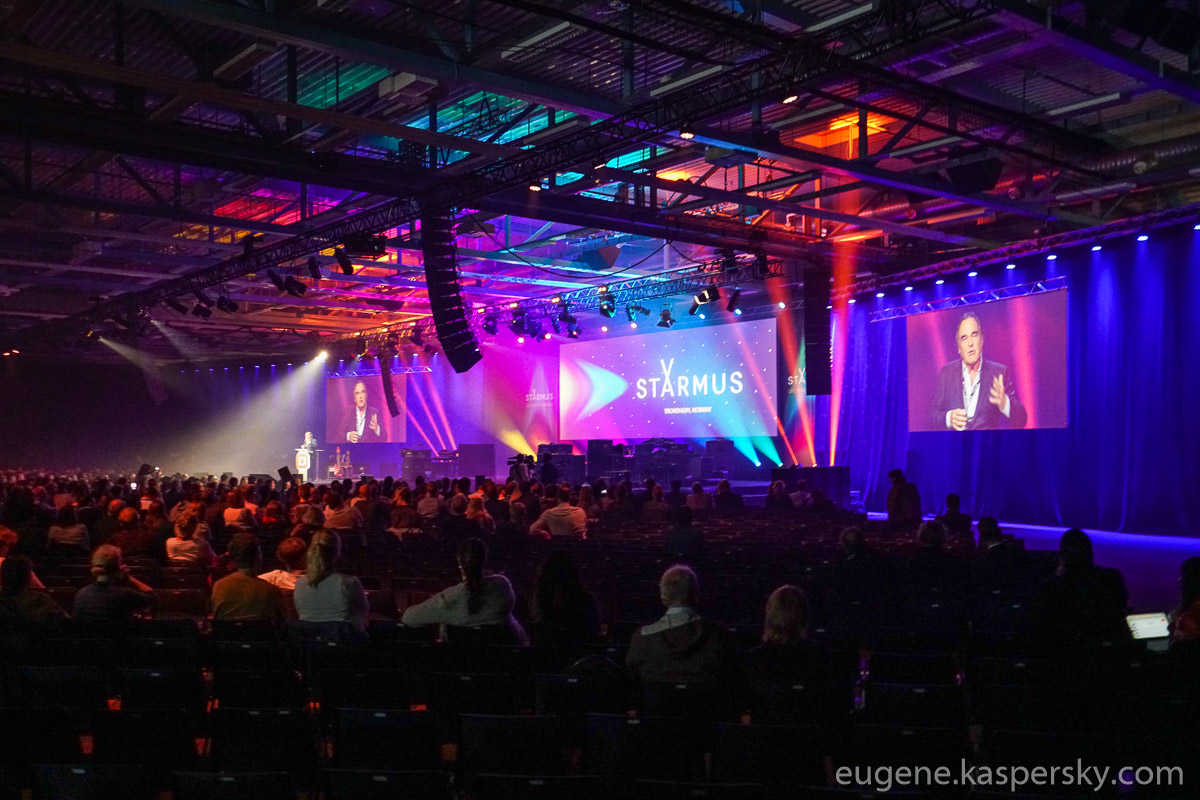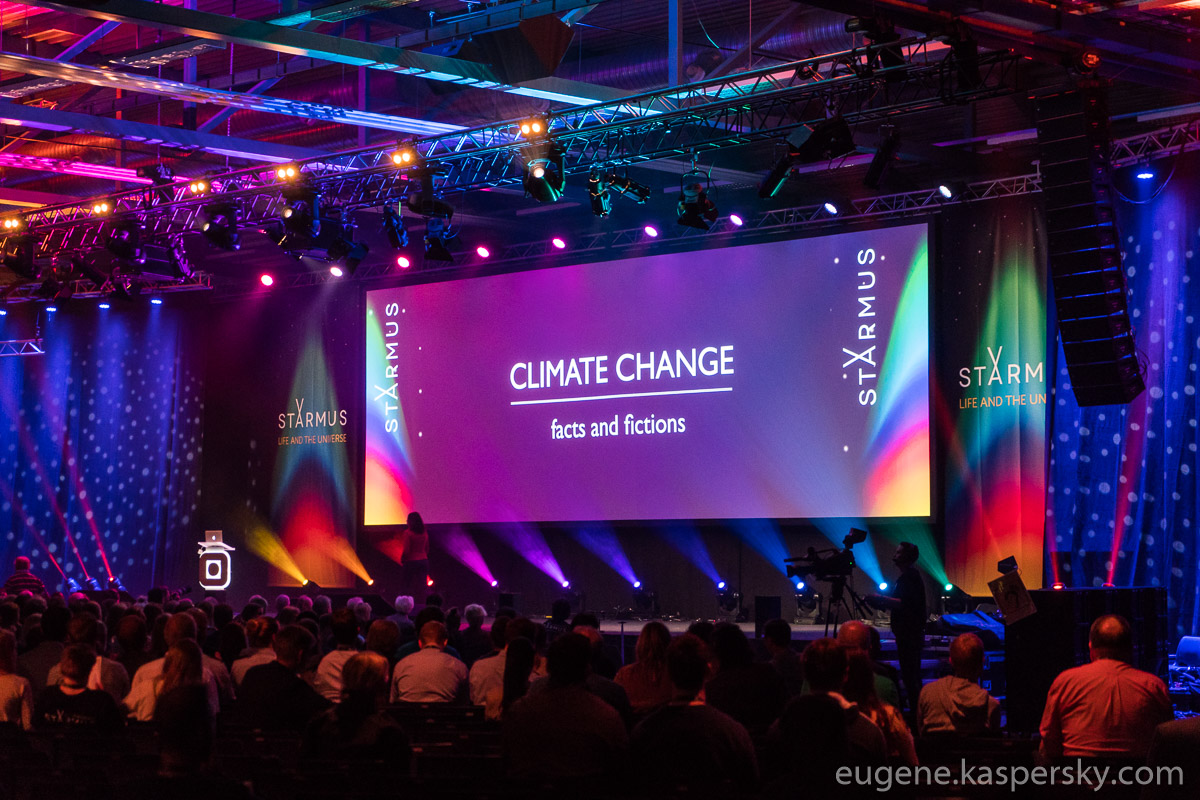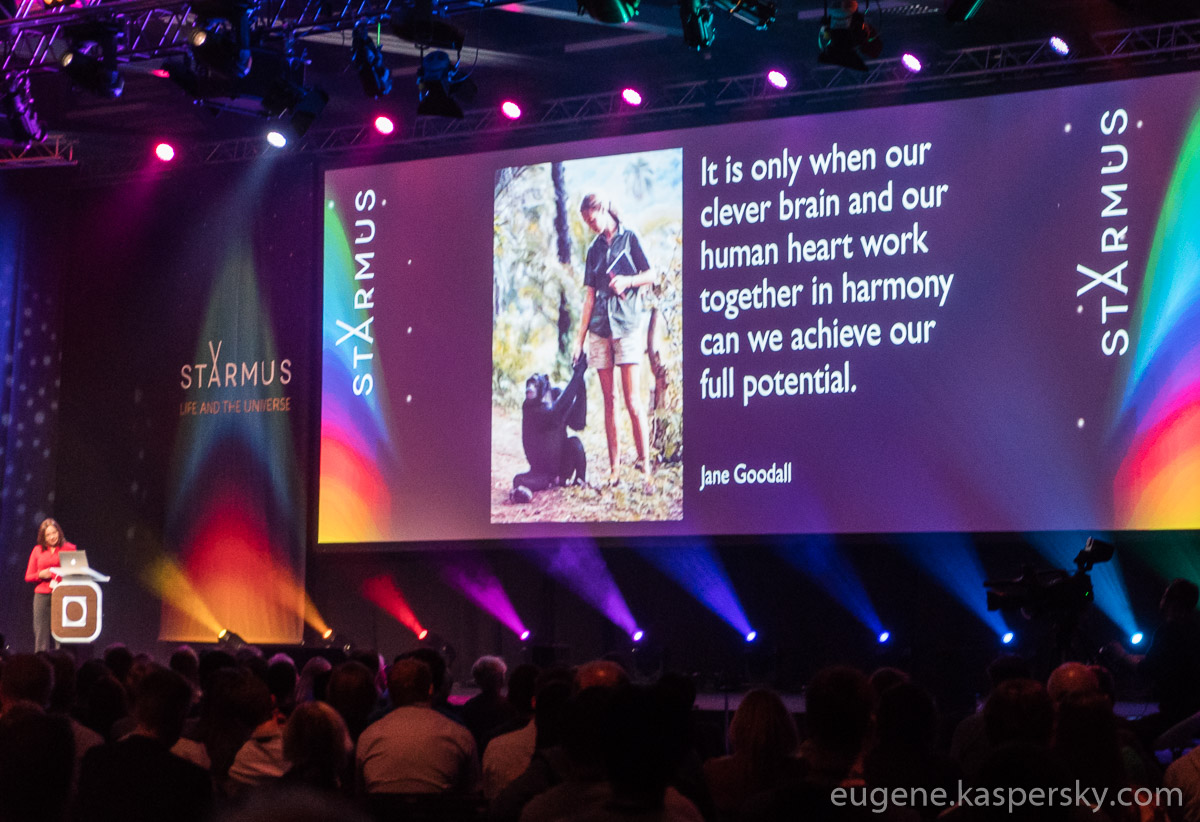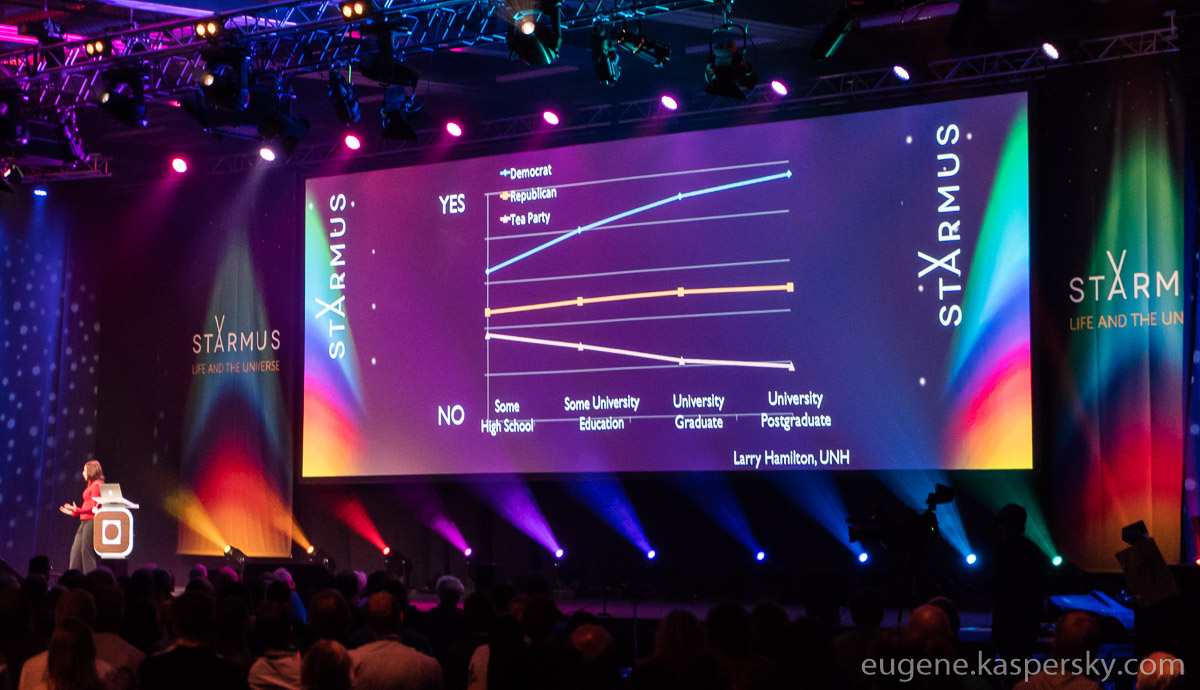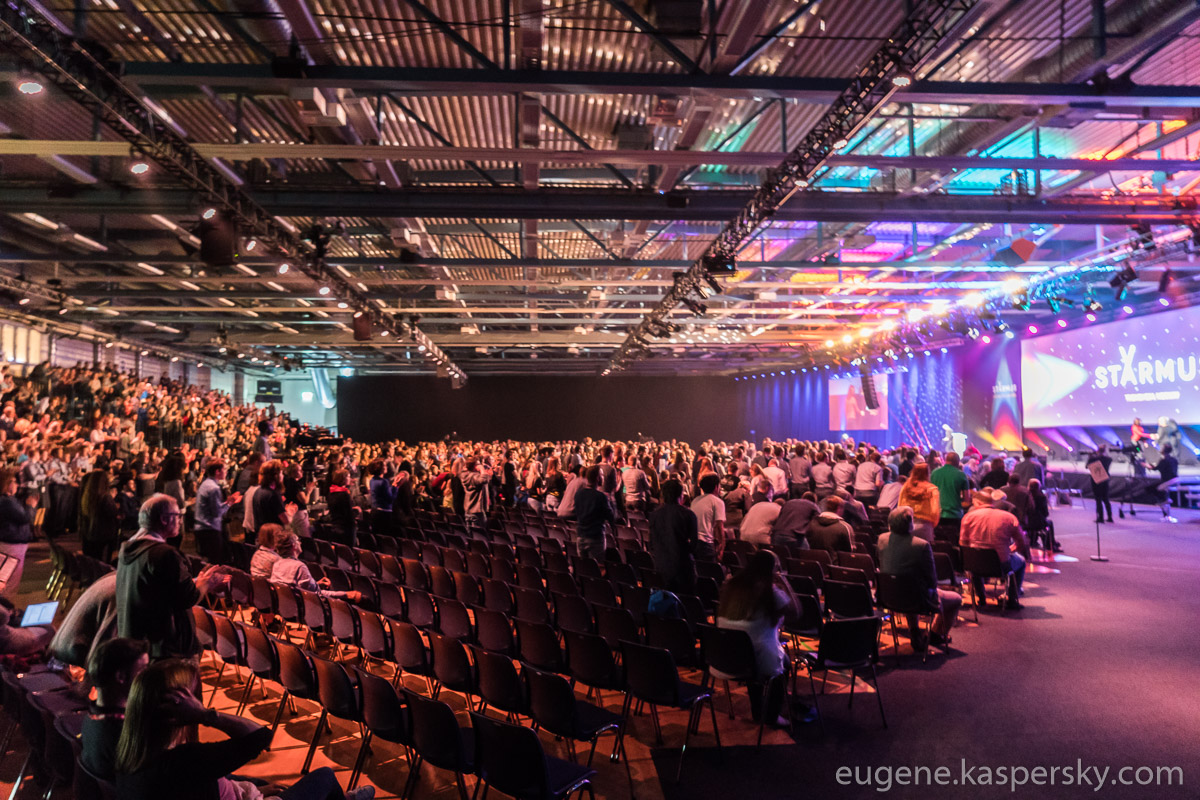June 28, 2017
Stars, Strings, Exoplanets, Apollos, and Now Politics – Starmus 2017.
Hi folks!
Time to tell you all about this year’s Starmus. Last year the conference took place in sunny Tenerife. This year – just the opposite: it was in rainy Trondheim in Norway. Not that the rain made the experience any worse. Mere weather cannot dull something so otherworldly as Starmus…
Here’s the audience slowly filling up the venue just before kick-off:
This year 2,500 folks attended (at least, that’s how many tickets were sold), plus there’d have been untold numbers watching the proceedings via the Internet. And judging by the fact that the large hall was packed, I reckon all those who purchased tickets were in fact there.
In the smaller hall next-door there was some kind of exposition-exhibition, in which we were also taking part:
Chess tables – great idea! They were a real hit – especially with the Norwegian armed forces!
Right next to the Norwegian officers was an installation from RT360. Whoah – really something: 3D panoramas from the International Space Station (and here’s a whole playlist of special space vids). Mind blowing viewing – especially with 3D-specs on. Here are more 360 videos.
Well what a coincidence. Just the other week I was checking out AirPano, who are also into these 360-degree aerial panorama thingies. Why was I checking them out? Because they took some panoramas on Antarctic Biennale :).
But I digress…
Back to Starmus and the presentations thereat…
…At least – the ones I saw. For, sadly, I missed the first day-and-a-half and, by the looks of it, that’s when the most interesting speeches were given: Exoplanets and ExoEarths, new string-theory findings, tales from the Apollo 16 and 17’s project’s participants, and more. A great shame. Mustn’t repeat such errant behavior. If you’re going to Starmus you need to be there for all the days. It’s like missing out Friday at the Pyramid Stage. Yeah, like you’re really gonna wanna miss Radiohead?!
And then I heard that Stephan Hawking wasn’t able to make it to Norway. Another great shame! But, never one to spoil the party, he did still give his speech – only via the Internet (on the future of humanity).
The interview with the members of the Apollo program was excellent. Alas, Buzz Aldrin wasn’t there in person, but he was up on the big screen taking part. Yes – really – that Buzz Aldrin – the second man to ever set foot on the moon (and also the first man to ever land on the moon – because he was Apollo 11‘s pilot!). Two other astronauts were on stage in person: Charles Duke (Apollo 16) and Harrison Schmitt (Apollo 17).
They told us plenty of tales which, though old, aren’t all that well-known – stories from the horse’s mouth with more of a human, technicians’ angle – less of the ‘official’. Most interesting! For example: how they once landed on the Moon with just 30 seconds until the landing fuel tank would have been empty (just 4% of the fuel left); that is, in just 30 seconds they’d have had to pull the throttle and get back into orbit and wait for a rescue mission to come and take them down.
Schmitt (also a geologist – thereby the only scientist among the Apollo astronauts) told us how he was amazed to have found traces of volcanic activity on the Moon. At one point he was walking on lava that was billions of years old!
Here’s Buzz Aldrin showing off his… cosmic pioneering spirit T-shirt:
One phrase from the Apollo crew that lodged in my memory came just after it was said how the Apollo project was a product of the Cold War (and, I’d add – just as the Soviet space program was). In closing, Buzz Aldrin said that he thinks that ~: “All space-traveling countries of the world – the USA, Russia, China, India and Japan – should come together and cooperate and collaborate with the goal of putting men on Mars!”. Hear, hear! And it wasn’t just me who was in agreement. Everyone was on their feet applauding!
The following day was somewhat very geopolitical. Hmm; that’s something new. And I still don’t quite get it. What’s edgy world politics doing at a popular-science gig? For example, Oliver Stone gave a speech.
He was supposed to talk about ‘Decoding truth in films’, but he veered off into… well, just get a load of this…:
He told the audience how the US security services, sometime around 2008, planted backdoors in the energy and transportation systems of Japan, and today, with the ‘press of a button’, the USA could shut down the whole country’s electricity supply and train system – should Japan conduct itself inappropriately!
He added how similarly scandalous covert actions had taken place in Brazil and other Latin American countries, and also in Europe. Apparently Edward Snowden told him about this.
There’s more: ~”the USA spies on anyone and everyone all over the world and pushes its own agenda – always, everywhere, but this is a road to nowhere, it’s just wrong, and it (at the very least) leads to rising tension around the world. One needs to listen to and work with everyone, and not just do as you please. And if the US starts talking meaningfully with the rest of the world – including Russia – everyone would be better off.”
Hmmm. Interesting. But, you know me – that’s politics, and I don’t do politics. But still… what a story about Japan and South America and Europe! Could it be true? It’s a shame we haven’t had a good look at the critical infrastructure in these continents/countries; if we had we’d have been able to check the facts on the ground.
Yes, the speeches and stories were fascinating. So much info – my brain hurts. Sadly though, this was where the real interesting stuff ended. Later on the quality dipped. Nope. It dropped off a cliff…
Example: the presentation of Katharine Hayhoe on global warming and anthropology: ‘Climate Change – facts and fictions’.
Nice title. Attractive title. Seductive title. It makes folks want to turn up and listen; indeed, many did.
So there was me, who sat through right to the end, waiting for these ‘facts and figures’ to be announced – but they never were! Not a single formula appeared up on the big screen. Hardly even a number turned up there either. Hardly any letters! Oh, ‘CO₂’ made a single appearance (how couldn’t it?!). Nope. Instead there were slides showing stock photos of polluted industrial zones or the natural world being killed off, or sometimes quotes, like this one:
And here’s a slide to really put your wisdom and intelligence to the test:
Ok, so, I was expecting something different. I was expecting facts, findings, hypotheses, substantiations, arguments, theories, and projections and/or recommendations for the future. But there was none of that. What there was was a lot of… theological preaching, to put it diplomatically.
I was even more bowled over by the audience. After half-an-hour of non-stop pseudo-scientific demagogy they… just wanted more! Standing ovations even! I just sat there dazed and confused!
Now for a bit of a rant an aside here…
About this here thing called climate change…
Yes, levels of CO₂ are on the up at breakneck speed and this is bad and a worry, and something needs doing if we want to keep our planet green and blue and keep sea levels round about where they are now.
But!…
СО₂ and the greenhouse effect, which promise to one day soon do the whole world in – their causes may not be totally down to the activity of humans! Wait. Wait! Before you cry ‘climate change denier!’, let me finish!
I said totally. Of course, it’s quite possible that it’s been man’s actions that have shaken up the indigenous natural order and caused a manmade misbalance; however, the enemy of all good things is being searched for, in all likelihood, in the wrong places!
First, rewind, and a spot of the positive:
1. If there’s anyone denying the greenhouse effect – show them to the door right now.
“Total anthropogenic CO₂ emissions do not exceed 8% of its natural yearly cycle”. (That’s a translation from the Wikipedia page in Russian for Carbon dioxide in Earth’s atmosphere, but it’s not mentioned on the English page (I’ll not get into that whole other issue here:).) So, turns out man’s CO₂ emissions are rather insignificant in the grander scheme of (natural) things. Still more significant than they should be, but still – 8% against 92%.
So, ice is melting, snow is melting, icebergs are melting, glaciers are melting. Greenland rivers become ever more gusty with all the melted ice (I know for a fact – I’ve bathed in them), New Zealand’s icecaps are weeping like the rest of them (seen), and Kilimanjaro’s snow – well, there’s no such thing any more (seen that for myself too). Alarming.
But when fingers are pointed exclusively at industry and cars and airplanes, I have to protest! Before any fingers are pointed let’s first work out who is the real enemy. In focusing our anthropological loathing on man-made CO₂ causers, we may be missing the main culprit.
Let me explain…
I’m of course not against green technologies. Just the opposite – all for them. If they help keep the air, water and other natural things clean and indeed natural – great.
What I am against is wholesale jeering of the… suspect without careful further investigation. For it – humanity – is, as far as I can see, just a suspect so far. CO₂ emissions are growing – no one’s disputing that. But what that means is that it’s the balance of production and consumption of this gas that has been disrupted. Nature isn’t able to process all these megatons of matter that are emitted into the atmosphere.
I just want to see more unbiased scientific investigation of the ratio between natural and anthropogenic emissions of carbon dioxide, is all. I want the above-mentioned 8% backed-up by other respected sources.
I also want to see more unbiased scientific investigation of how much natural consumption of carbon dioxide has been affected by human activity. You can find very little on the Internet about this, despite its being hugely important. Why is that?
What we need is information folks. Facts about climate change. After all, no one wants to sit idly by while we die out, or return to the stone age with no industry, cars, planes, production, consumption, development, now, do they? Therefore, we need research and the resulting data it gives. Then we can do something. Then we can understand, plan, and fulfil those plans.
It was with such musings flitting about in my mind that I left Starmus. See – Starmus gets you thinking. That’s why it’s my favorite conference. Starmus – don’t ever change (well, maybe just a little less politics?:)
All the pics from Starmus 2017 are here.





